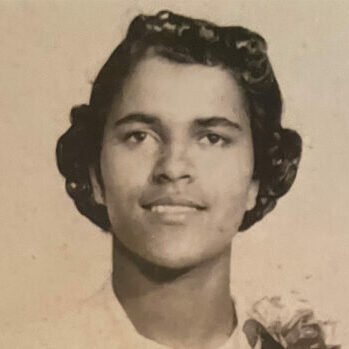
Growing up in Cambridgeport from the 1930s into the 1950s with Patricia Ann Smith Lucas
Above image: Ann Lucas on the day of her graduation from Cambridge High and Latin School in 1950. (Photo: Lucas family)
By Gretchen G. Adams

During a cozy spring afternoon, History Cambridge volunteer Gretchen G. Adams visited Patricia Ann Smith Lucas to learn about the vibrant life she has led in Cambridgeport.
Born in 1932, Ann Lucas grew up on the eastern edge of Cambridgeport surrounded by members of her extended family. All four of her grandparents had ventured north to Cambridge from North Carolina during the Great Migration of African Americans from the Southern states. When they grew up, Ann’s parents, Thelma and Paul, and many of their sisters and brothers decided to raise their own families in Cambridgeport. When Ann was born her parents were renting an apartment on Allston Street, near the intersection with Peters. Their landlord was Clifton Merriman, the African American postal service administrator for whom the Central Square post office is named. After Ann came six more children, two of whom died young.
Ann’s mother was a force, and Ann admired her deeply. An ace student, Thelma graduated from Cambridge Latin when she was only 15. At that young age she was accepted to the prestigious Seven Sisters school in Pennsylvania, Bryn Mawr College. After three years there, Thelma decided to forgo a liberal arts degree and pursue a career in what was then a fledgling field: she transferred to the innovative Sargent School of Physical Training in Cambridge. The founder, Dudley Sargent, had established the school in 1881 as the first educational institution in the United States to train teachers for careers in physical education. There, Thelma learned how to help people of all ages and athletic abilities improve their health through exercise. Unfortunately for those who would have been her students, Thelma never had an opportunity to pursue a career in physical education. She fell in love with her neighbor, Paul Smith, and they wed. Her new status as a married woman disqualified her from teaching – at that time, local schools hired only women who were single
Although she didn’t have a paid job, Thelma became an indispensable member of her community. Because Thelma was known for her empathy and common sense, Italian, Irish and Eastern European as well as African American women sought her out for advice on practical and personal matters. Thelma established a Girl Scout troop for Black girls who weren’t welcome in white troops. She held meetings at the Cambridge Community Center on Callender Street, an institution established by African American clergy.
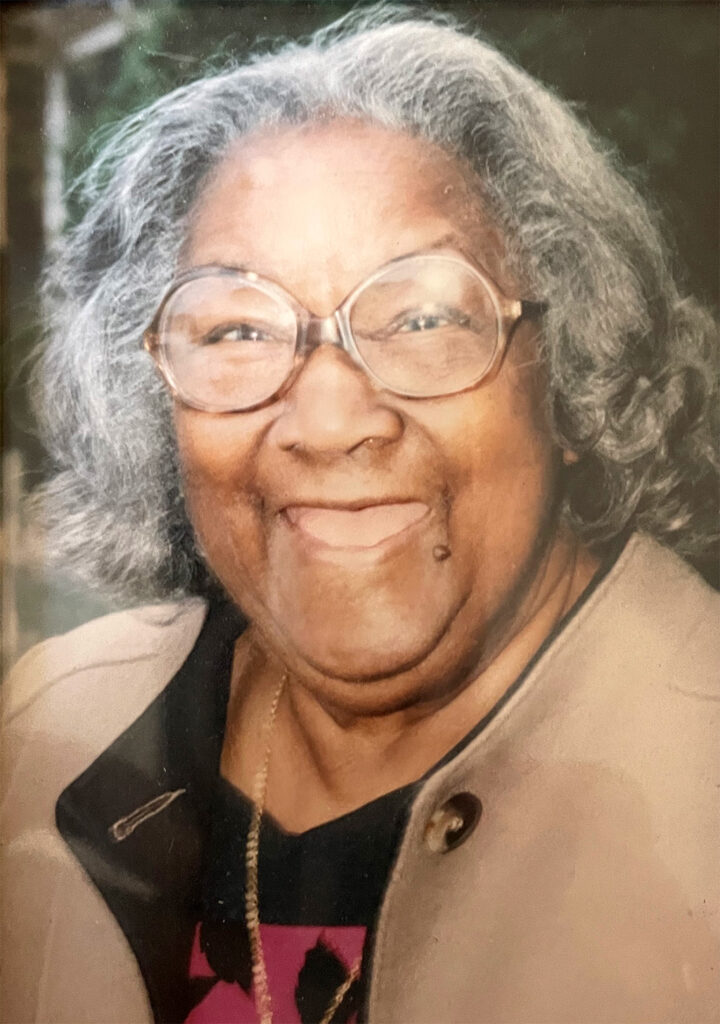
At Union Baptist Church on Main Street, she sang soprano in the choir for more than 20 years. As an older person, she worked as a Vista volunteer in a public school, always arriving at the office by 9 a.m. sharp. In 1974, when Boston schools were integrated for the first time, she volunteered to accompany and protect African American children on buses transporting them to previously all-white schools. Even after she moved to senior housing at Truman House near the Cambridge courthouse, Thelma continued to help others. Many of her neighbors were immigrants who were not yet proficient in English. Thelma helped them complete forms, obtain documents and navigate government bureaucracy.
Ann remembers Thelma as a strict mother who held her children to high standards in all areas of their lives. She took their education seriously, telling Ann and her siblings regularly that she wanted them “to go a step beyond” her. Each day, she checked her children’s homework carefully. If their handwriting was messy, the children had to redo their work, making a neater, more legible copy. If they hadn’t finished their assignments by bedtime at 9 p.m., they had to rise early to complete it. A stickler for good grammar and clear enunciation, Thelma corrected her children relentlessly, insisting that they speak “the King’s English.” When Ann enrolled at Cambridge High and Latin School in the ninth grade, she sometimes had difficulty understanding the accents of other African Americans.
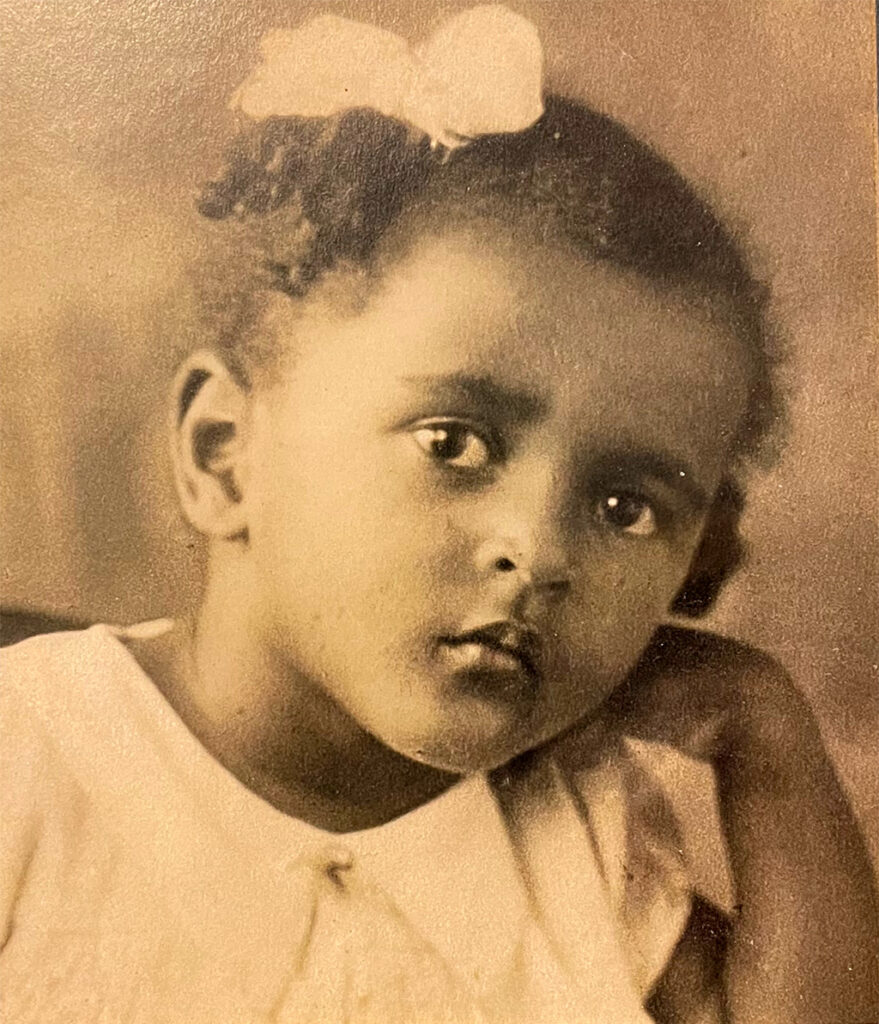
Thelma kept a spotless household and required Ann and her siblings to help maintain it that way. They had to polish copper pipes in the kitchen, as well as complete more ordinary tasks such as making beds and washing dishes. Ann recalls that her younger siblings complained that Ann did her work terribly slowly, and often sneaked off to read a book and eat some of her mother’s homemade bread.
When her homework and chores were completed to her mother’s satisfaction, Ann was allowed to roam the neighborhood with her cousins. They played around the cannons in Fort Washington Park and enjoyed exploring along the banks of the Charles River. Closer to home, Ann and her pals chalked squares on the sidewalk for playing hopscotch and organized games of Giant Steps, similar to Mother May I?, in which children try to reach the person who is “It” by requesting permission to approach in one of a variety of steps. All Ann’s friends had jump ropes and knew how to jump double Dutch, with two ropes spinning simultaneously in opposite directions. To the children’s delight, parents occasionally came outside and stepped into the ropes to show off their own rope-jumping skills.
As a child, Ann frequently heard horses clopping by on their way to deliver coal, ice and other goods to shops and houses. The horses returned in the evening to a barn surrounded by a large field for grazing at Sidney and Hamilton streets.
Ann loved to visit the horses, always being careful not to get too close. One afternoon, she and a friend had what they thought was a great idea: Why not get a snack and bring it to the barn to eat it? They scurried over to Hyman Rudolph’s grocery store on the corner of Allston and Sidney streets. Ann and her friend scoured the shelves and decided to treat themselves to a loaf of bread and jar of strawberry jam. No money was needed because Thelma kept a tab at the market, which she, like most customers, paid off once a week. When Ann’s mother stopped by the store later that day to pick up a few items, she was incensed to learn from the shopkeeper what Ann and her friend had done. Ann was in big trouble! She remembers vividly the punishment her mother meted out – standing in a corner at home to reflect on her misdeed.
The horse field was the scene of many neighborhood gatherings. On fall evenings, parents sometimes gave their children permission to build a fire on the rockiest section of the field. While that was pretty darn exciting, the experience was made even more enjoyable when they were allowed to tuck potatoes into the coals. Ann fondly remembers biting through the charred and crunchy potato skins to get to the fluffy interior.
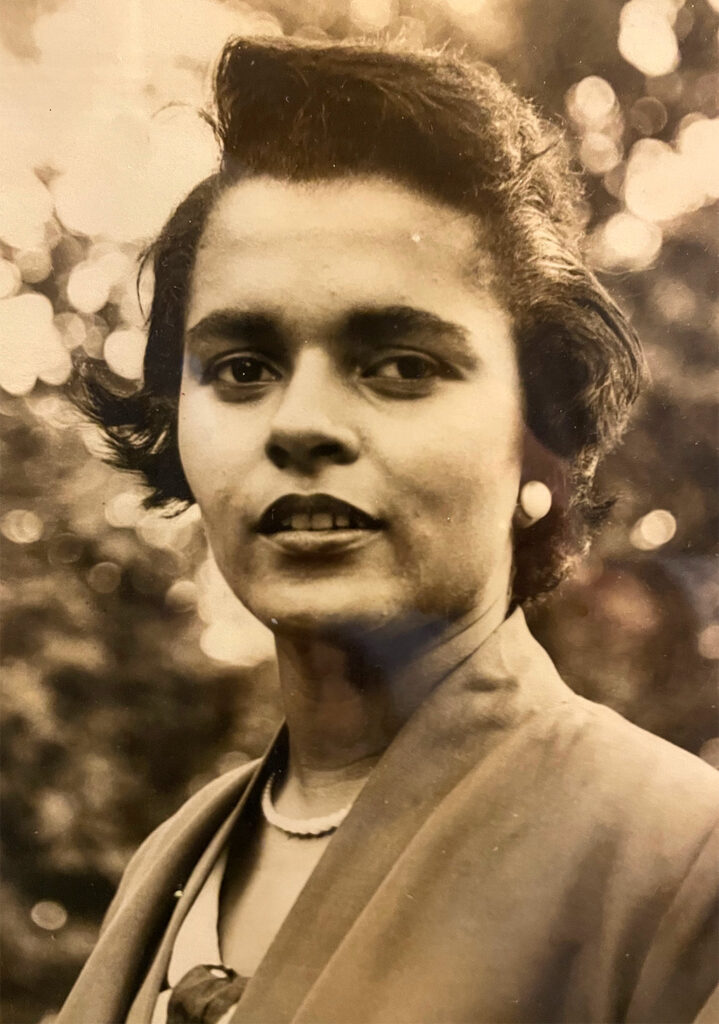
Ann’s house was almost always filled with delightful aromas. Her mother prepared all food from scratch, baking rolls, loaves of bread and English muffins for the family. She whipped up cream-style corn and hearty macaroni and cheese, and soaked beans overnight before baking them with molasses, onions and bacon. Not only did Ann enjoy her mother’s cooking at breakfast and dinner, Ann – like all public school children in Cambridge, which did not have schools with cafeterias in the 1940s – walked home for lunch every weekday. On Sunday mornings, Thelma fried fish for a hearty meal before the family went to church.
After church, Ann’s extended family gathered to play music. Thelma was a whiz at jazz piano and had a beautiful voice, as did her brother Alfred, who also played the trumpet. Thelma’s brother Earl had trained on the violin. Ann’s father’s brother kept the beat on his drum set. While the adults jammed, Ann, her siblings and cousins joyfully marched in time around and around the dining-room table. Unfortunately for Ann, she did not inherit her family’s musical aptitude. She took piano lessons, but her instructor soon advised Thelma to save her money! Although she tried her best, Ann couldn’t sing on key either, but soon discovered the one musical skill at which she excelled – listening.
Ann’s father initially supported the family by working at Abt motors on Brookline Street detailing cars – waxing, polishing and cleaning vehicles. When the Second World War began, the Quincy shipyard put out a call for laborers to help build vessels for the Navy. Paul applied and was delighted to secure a position that paid a much higher salary than the one he had earned at Abt.
When Ann was 13 and her siblings were 7, 5, 3 and 1, their life changed dramatically. Her father left them and moved to Philadelphia to start a new family. Upon his departure, her mother gathered the children in the living room and told them solemnly that they’d have to meet this challenge together, and that they could and would survive without him.
A social worker soon came by to assess the family’s situation and determine what help was needed and could be offered. At one point during her visit, the government functionary strode over to the refrigerator and flung open the door. She was shocked to see real butter on the shelf, exclaiming, “Why are you spending money on this extravagance? You should be using oleo!” Skilled cook that she was, Thelma would never stoop to using fake butter; Thelma told the do-gooder politely that she wouldn’t be needing her help and could see herself out.
At the time of her father’s departure, Ann’s family was living in an apartment on the first and second floors of her paternal grandfather’s house at 198 Sidney St. He had retired after a career at the Central Square post office. Ann characterizes her grandfather as a strict Baptist gentleman who always dressed properly, but who nevertheless enjoyed getting his hands dirty, raising tomatoes, green beans and lettuce among other vegetables in the backyard. A wine lover, he fermented his own in a shed behind the house.
When her husband left, Thelma, who had never held a full-time job, had to go to work. Despite having a college degree, Thelma’s employment options were limited in a region plagued by racism. Ann recalls that while her family members could eat at the lunch counter at Woolworth’s, no black people worked in the store or in any of the Cambridge department stores. Thelma found work as a housekeeper – first with a family near Harvard Square, later in Arlington. Ann recalls that her mother earned just $10 per day. While Thelma worked, married aunts looked after Ann’s sisters and brothers who were still too young to go to school.
The year after her father departed, in 1947, Ann enrolled at Cambridge High and Latin School. Ann shared her classes with grown men in addition to teens – World War II veterans who had enlisted before finishing high school. To take advantage of the GI bill and attend college, they needed a high school diploma. While most African American children were tracked into practical arts classes such as cooking and sewing, Thelma insisted that her daughter, Ann, take college preparatory courses.
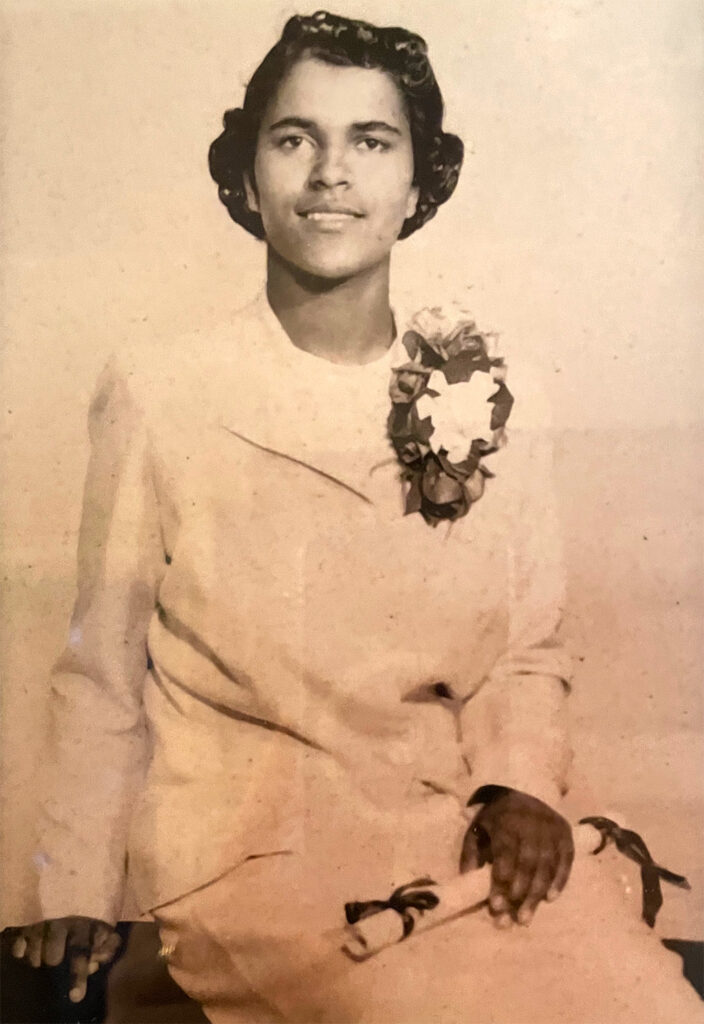
When Ann graduated in 1950, the Cambridge Community Center threw a bash in honor of all of the African American students who had earned high school diplomas in Cambridge. Ann, 18, attended. Dashing young Frank Lucas, who had grown up in the Riverside neighborhood and studied graphic design at Rindge Technical School, asked her to dance – and Ann declined. Unbeknownst to Frank, Ann’s refusal had nothing to do with him. She simply didn’t know how to dance. Although Frank appeared to brush off the rejection, asking one of Ann’s cousins to dance instead, he was smitten. Although he didn’t even know Ann’s name, he held her image in his heart until he was able to track her down several years later.
Ann worked as a mother’s helper for a year, then found employment at a laundry on Soden Street. This was not a good match. Her boss railed against her, complaining that she didn’t work quickly enough. One of Ann’s sisters came to her rescue, helping Ann get a job at BF Goodrich in Watertown (where the sister already worked) making deicers for airplanes. Part of the work involved stretching sheets of rubber around metal coils. Again Ann encountered a supervisor dissatisfied with her pace. He transferred her to the factory attic where she was tasked with cleaning sneakers, another of the company’s products. Ann had enough of businesses preoccupied with speed. She needed to find a career that prioritized care. Ann applied to and was accepted by the Shepard-Gill School of Practical Nursing of Massachusetts General Hospital. As she walked to and from her mother’s home, then at Washington Elms on Harvard Street in The Port, she often crossed paths with Frank Lucas. Although Frank recognized her and was thrilled to see her again, Ann had no memory of him, and never acknowledged him.
Eventually, Frank found a friend who recognized Ann by his description of her, and told Frank her name and where her mother lived. He dropped by the apartment unannounced and was in luck – Ann’s mother had met him at the Cambridge Community Center long ago and had fond memories of him. She welcomed him in and called for Ann. Frank could finally begin courting Ann in earnest. He won her over and they married. Unable to afford to remain in Cambridgeport, they settled first in Sharon, then later moved west of Boston to a suburb where they raised three children. As the children grew older, Ann began working as a nurse at a long-term care facility, retiring after 29 years. Ann and Frank have now been happily married for 66 years, enjoying the comforts of their lovely art-filled home. They both remain deeply connected to Cambridge and return often to the city to visit.
Did you grow up in Cambridgeport? History Cambridge wants to hear your story. Fill out this Google form or email us at info@historycambridge.org.
Gretchen G. Adams is a volunteer for History Cambridge.
This article was originally published in our “Did You Know?” column in Cambridge Day.






